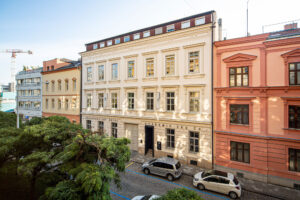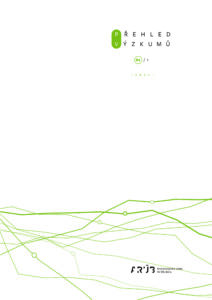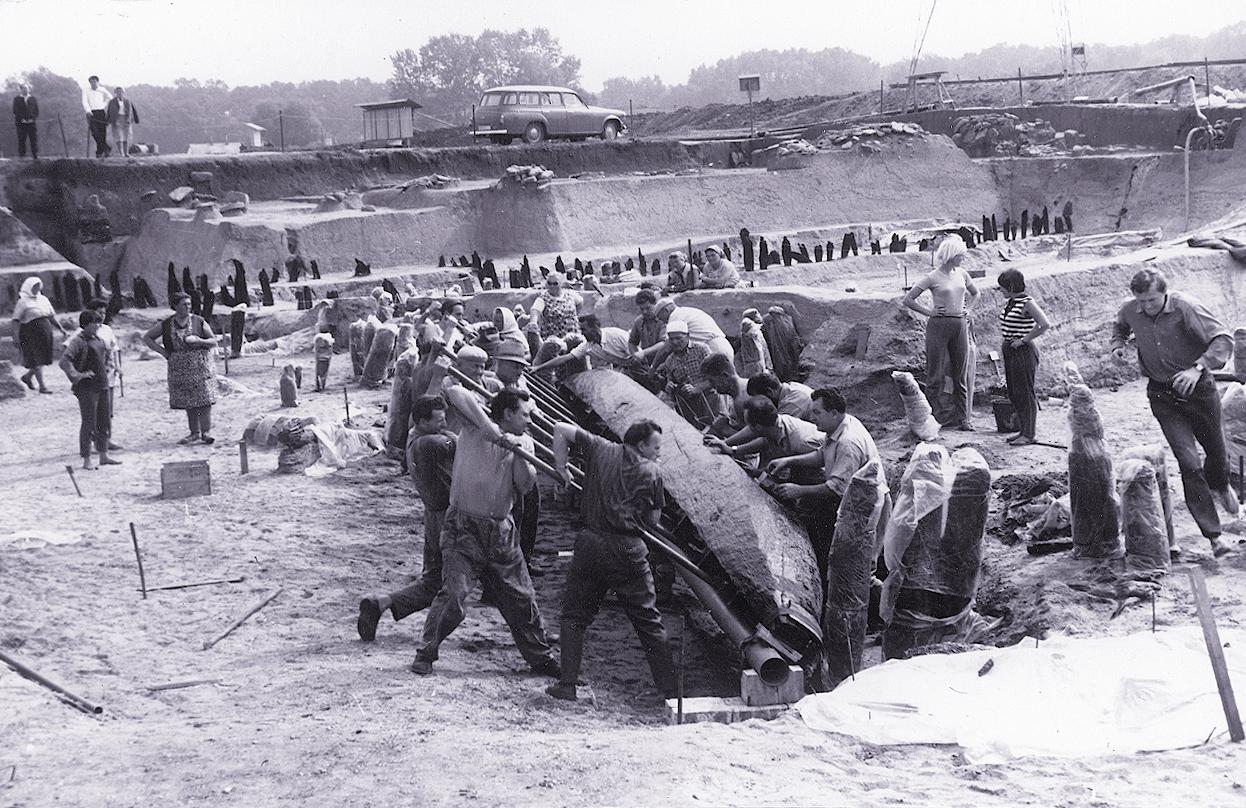Research Centre for the Paleolithic and Paleoanthropology
The centre focuses on the adaptation of our ancestors, which are examined as a major force of evolution with a far-reaching impact. Our unique archaeological record – rare complex hunter settlements with some of the earliest fossil finds of anatomically modern people in Europe – gives us the privilege of reconstructing the lives of the hunters and gatherers who lived here at the time of the climatic fluctuations of the Last Glacial Period.
We study the migration waves of modern humans from Africa to Europe during the Upper Paleolithic. Those were the explorers of new territories who had to completely change their lifestyle, thus catapulting their technological and cultural development to its theoretical peak of that time. We are interested in the relations and contacts between the hunter-gatherer cultures of anatomically modern people and the original Neanderthal population at the boundary between the Middle and Upper Paleolithic and, on the other end of the timeline, in their clashes and interaction with Neolithic farmers at the end of the Middle Stone Age. When examining the finds and formulating research questions and theories, we utilize modern research methods that enable us to gradually put together a complex image of the people of that time. Ethnoarchaeological comparative research helps us to interpret the lives of past hunter-gatherer cultures. Expeditions to Ethiopia, the northern territories of Australia and northern Siberia allow us to observe the life and behaviour of present-day nomadic cultures and get to know the cultures of the past better.
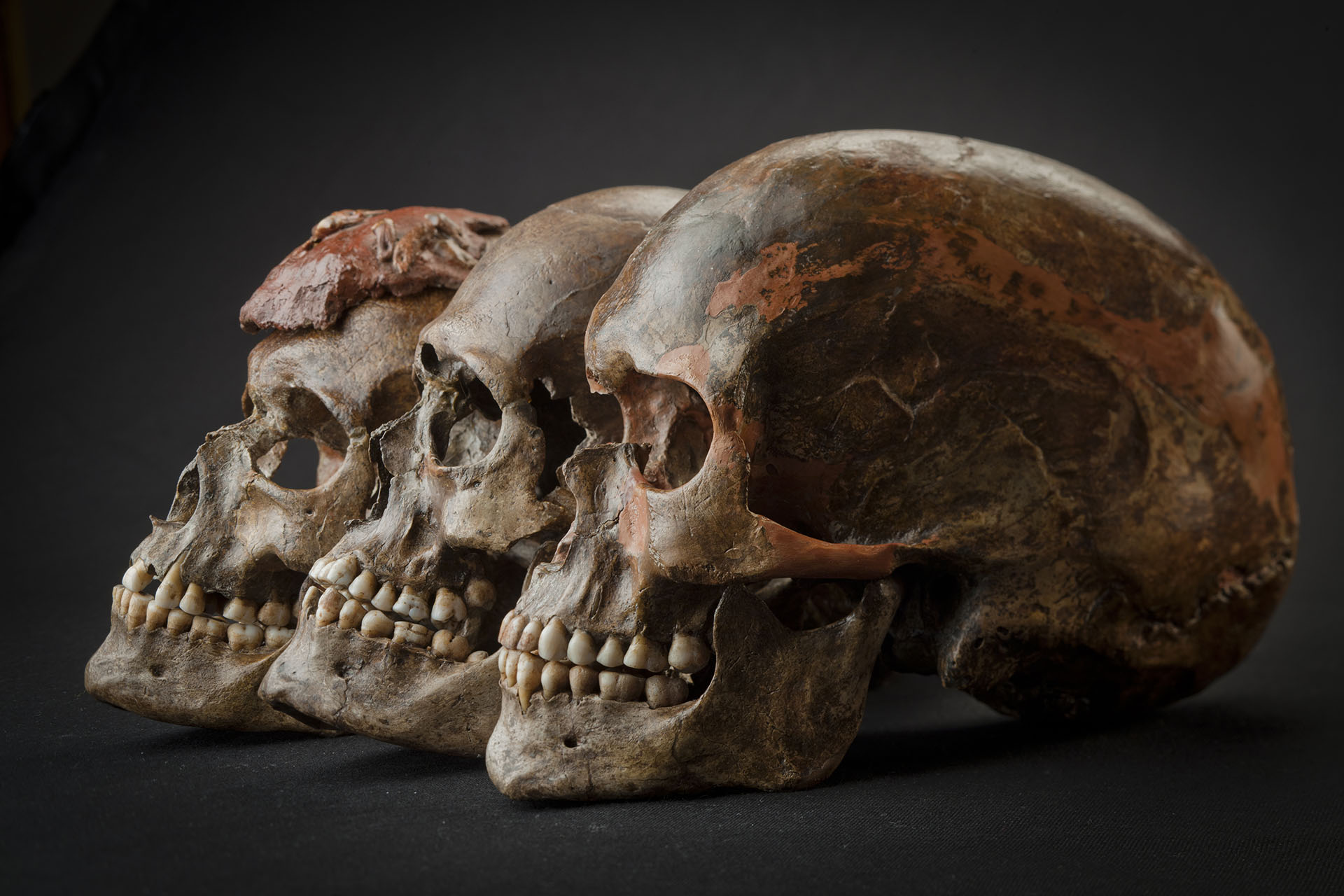
We are piecing together the mosaic of knowledge of the first anatomically modern people in Europe
The skulls of three individuals buried in a common grave at the Dolní Věstonice II site with traces of red pigment. Photo: M. Frouz
Facts
Establishment of the centre
1995
Head of the research centre and the base
Mgr. Martin Novák, Ph.D.
Researchers and specialists
Mgr. Jaroslav Bartík, Ph.D.; Mgr. Soňa Boriová; Mgr. Dominik Chlachula; Mgr. Kateřina Papáková, Ph.D.; doc. Mgr. Sandra Sázelová, Ph.D.; prof. PhDr. Jiří Svoboda, DrSc.; PhDr. Petr Šída, Ph.D.; Ing. Petr Škrdla, Ph.D., DSc.
Mission
At the Centre for the Paleolithic and Paleoanthropology, we focus on widely conceived interdisciplinary research into the origin of modern people in Europe. We examine their physical, social and behavioural adaptations in the environmental, climatic and cultural context. We put these issues into context with the question of the end of the Neanderthal people in Europe or with the process of the gradual replacement of the last groups of hunter-gatherers by agricultural populations.
We study the adaptations of the mammoth hunters, which brought them to the top of the hunter-gatherer cultures
The view of the northern slopes of the Pavlov Hills where Upper Paleolithic hunters repeatedly built their settlements. The strategically situated sites provided a wide view of the river valley and timely information about migrating animal herds. Photo: M. Frouz
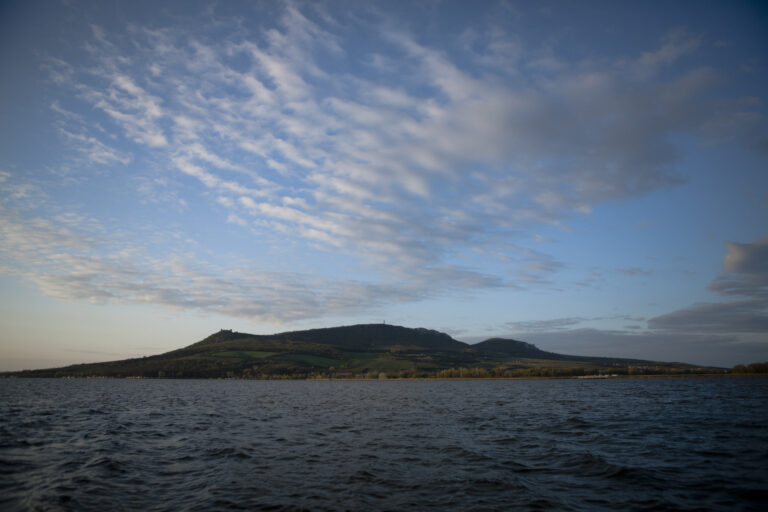
Main subject areas
The Early Upper Paleolithic (45,000–35,000 years BP): the transitional period when modern people replaced the Neanderthals is a crucial topic of current Paleolithic archaeology and paleoanthropology. In Europe, it is connected with important cultural and social changes that stimulated new patterns of behaviour, complex hunting strategies, technological innovations and symbolic expression. Within this framework, we regard Moravia as a possible “contact zone” between the local Neanderthals and the newly arriving anatomically modern people at the time of the spread of the first transitional Upper Paleolithic techno-complexes. These included the Bohunician and the Szeletian, which were later replaced by the Aurignacian culture, the first purely Upper Paleolithic culture of modern people.
The Gravettian (30,000–22,000 years BP): this archaeological culture of the “mammoth hunters” filling the peak period of the Upper Paleolithic is among the most complex hunter-gatherer adaptations to the Ice Age. Our activities naturally focus on the Dolní Věstonice – Pavlov – Milovice settlement complex, an internally structured complex of hunter settlements unique in all of Europe, which testifies to mammoth hunting and a wide range of other human activities. The complex has been examined for almost a century by Karel Absolon, Assien Bohmers, Bohuslav Klíma, Jiří Svoboda and other scholars. In 2010, following the ARÚB proposal, it was declared a national cultural monument under the name “Dolní Věstonice – Pavlov Archaeological Site” and since 2016, it is presented on the popular-science level by the unique Archeaopark Pavlov project.
The beginning of Late Upper Paleolithic (22,000–18,000 years BP): the importance of cultural reactions at the time of a worsening climate during the Last Glacial Maximum offers a rare insight into the human settlements in scarcely settled Central Europe. The long-standing and technically demanding excavation of the Mohelno-Plevovce site, situated on the bank of an artificial lake close to the Dukovany nuclear power plant, where the archaeological layers erode due to the constantly changing water level, has revealed several remarkable and unique settlement stone structures that are interpreted as stone floors of possible dwellings.
The Mesolithic (10,000–5,500 years BC): we examine the period when the groups of the last hunters-gatherers were replaced by agricultural populations. We do this especially as part of comparative research, focusing on the settlement and subsistence strategies of hunter-fishermen in the forest environment of the Holocene, especially the sandstone areas of northern Bohemia.
Our work focuses not only on traditional archaeological issues but fully utilizes the latest methodological approaches and analytical procedures. We are interested in the issues of dating, chronology and microstratigraphy, analyses of spatial and settlement strategies, technology, typology and trace analysis in material culture and the questions connected with symbolism, ritual behaviour and arts.
Particular emphasis is placed on paleoanthropological research focused on detecting new human fossil finds, virtual anthropology, genetics and hard tissue histology, along with isotope studies of the food chains, seasonality and migration of prehistoric human populations. Archaeological and paleoenvironmental studies enable us to reconstruct the glacier landscape and better understand the course and impacts of biotic and abiotic deposition and post-deposition processes, which considerably affect the archaeological situations we examine. Ethnological and experimental comparison studies also help us interpret our results and formulate new hypotheses.
Geographically, our key area of study is the Middle Danube region with unique sites in Moravia, especially the area of the Pavlov Hills and the Brno Basin, the Moravian Karst, the Moravian Hills, Předmostí, Petřkovice, the middle reaches of the River Morava, along with surveys in northern Bohemia, the sandstone regions of the Česká Lípa region, Bohemian Switzerland and Bohemian Paradise.
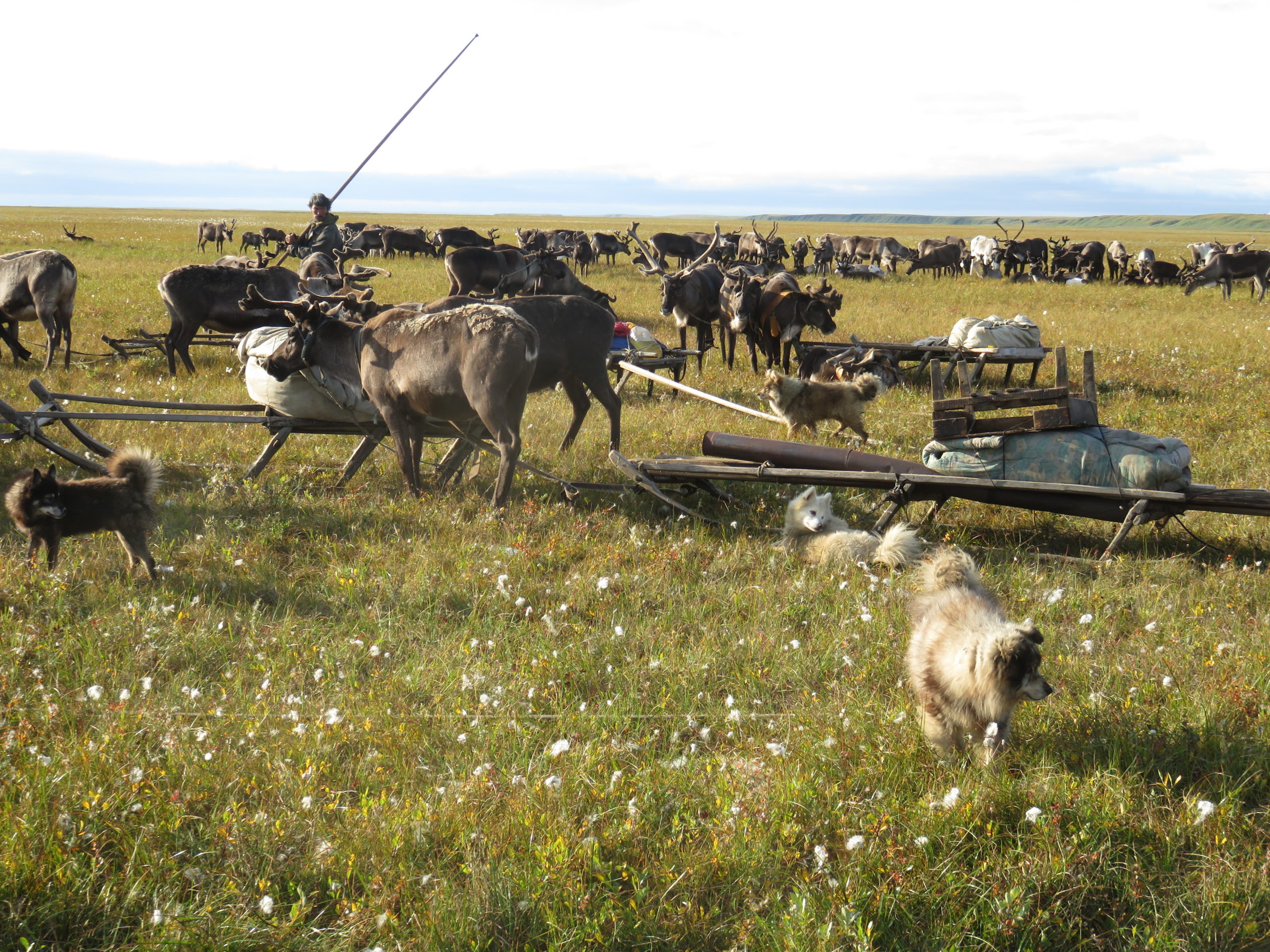
Through observing present-day nomadic populations in the world, we formulate better hypotheses of the past
Ethnoarchaeological research of nomadic reindeer herdsmen in northwestern Siberia helps us understand the way of thinking of Paleolithic hunter communities. Photo: J. Svoboda
Research base
Dolní Věstonice
Within the framework of ARÚB’s overall concept, the former fieldwork base in Dolní Věstonice was transformed into a scientific-research workplace of the Centre for the Paleolithic and Paleoanthropology in 1995. Today, the workplace concentrates, in the original context, on a considerable part of the archaeological, paleoanthropological and archaeozoological material from post-war rescue and systematic excavations carried out by ARÚB concerning the material from the Paleolithic and the Mesolithic periods. Our objective lies in the registering, gradual processing and the complex assessment of this evidence with the emphasis on interdisciplinarity and modern computer evaluation of the data. Within the framework of the workplace’s popular science and educational activities, the centre closely cooperates with nearby “Archaeopark Pavlov”; the centre’s researchers and specialists are directly involved in its activities.
Besides standard researcher offices, the workplace includes a laboratory for cleaning, conservation and basic processing of archaeological finds, a flotation station used for processing the sediment taken from archaeological sites and a specialised laboratory preparing thin sections from hard animal tissues. A library of monographs and journals with Paleolithic and paleoanthropological content provides researchers with information sources. The centre is also equipped with a modern archaeological depository, which meets the current requirements concerning the deposition of material from archaeological sites in terms of security, long-term protection against the influences of the surrounding environment (dust, moisture, temperature) and logistics.
Read more
- Website of the Dolní Věstonice on-site workplace: https://paleodven.wordpress.com/
- Petr Škrdla’s personal website: www.iabrno.cz/skrdla
- Archeopark Pavlov: https://www.archeoparkpavlov.cz/en/

